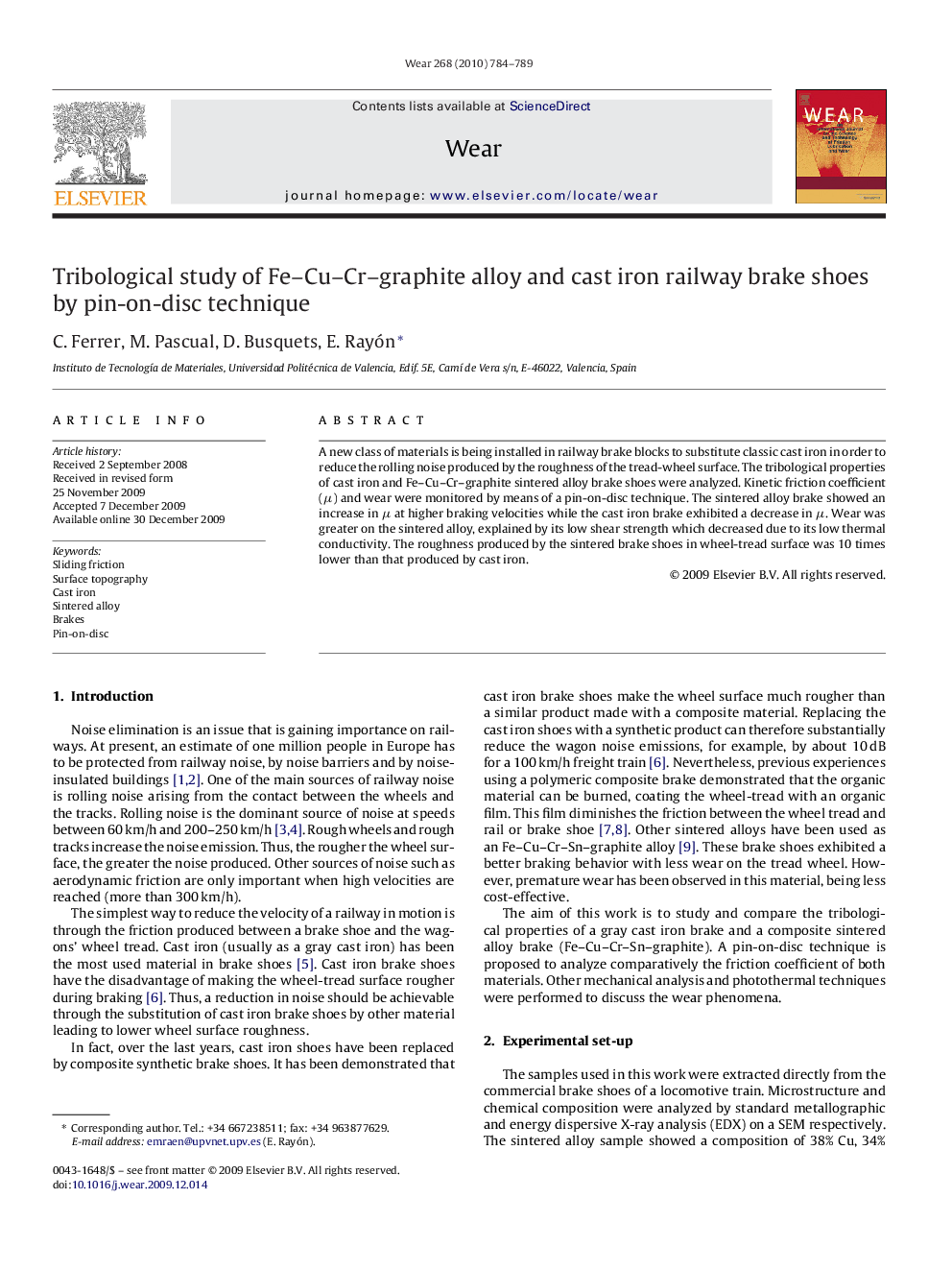| Article ID | Journal | Published Year | Pages | File Type |
|---|---|---|---|---|
| 618446 | Wear | 2010 | 6 Pages |
A new class of materials is being installed in railway brake blocks to substitute classic cast iron in order to reduce the rolling noise produced by the roughness of the tread-wheel surface. The tribological properties of cast iron and Fe–Cu–Cr–graphite sintered alloy brake shoes were analyzed. Kinetic friction coefficient (μ) and wear were monitored by means of a pin-on-disc technique. The sintered alloy brake showed an increase in μ at higher braking velocities while the cast iron brake exhibited a decrease in μ. Wear was greater on the sintered alloy, explained by its low shear strength which decreased due to its low thermal conductivity. The roughness produced by the sintered brake shoes in wheel-tread surface was 10 times lower than that produced by cast iron.
